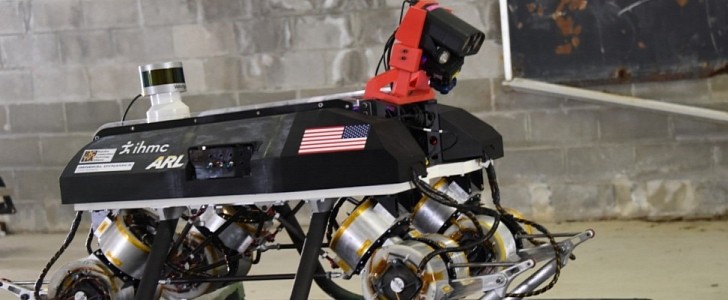Canine units are a staple in police forces, and dogs have proved to be valuable companions for law enforcement teams, but what if U.S. troops could also have four-legged helpers, in the form of robots? Army scientists say this could be the answer for future combat strategies.
There’s no doubt that unmanned aerial vehicles are already becoming one of the most important threats of future warfare, and this highlights the advantages of dismounted infantry units, because they can reach difficult terrain, such as mountains and dense forests, where they have the greatest chances of being covered against drones.
According to scientists at the Army Research Laboratory (ARL), infantry troops could benefit from robotic vehicles that would be capable of not only moving on this type of challenging terrain, but also advancing for several days, without requiring constant fueling.
In a recent paper, published in the Plos One scientific journal, a research team at ARL explored the possibility of developing this type of autonomous robotic vehicles. The issue isn’t new. For decades, U.S. military scientists have been tackling the problems of autonomous vehicle development, one of them being the lack of energy efficiency.
Wheeled and tracked systems typically require more power, but by rethinking the relationship between a vehicle’s mass, speed and power requirements, more efficient legged-platforms could be developed. For their study, the Army researchers used a formula that dates back to the 1980s, which estimates the power an animal with a specific mass needs, in order to move at a given speed. They found that it can be applied to legged, wheeled and tracked systems, which means that a legged-vehicle could be as efficient as a wheeled one.
This could help develop ground mobile systems that are much more practical in combat situations, because they can do more with less power, and the ultimate objective is to develop a new type of autonomous ground vehicle that can deliver supplies to U.S. troops in difficult terrain areas.
It looks like it won’t be long until infantry soldiers will be marching through the mountains with their trusted four- (or multiple) legged robot companions.
According to scientists at the Army Research Laboratory (ARL), infantry troops could benefit from robotic vehicles that would be capable of not only moving on this type of challenging terrain, but also advancing for several days, without requiring constant fueling.
In a recent paper, published in the Plos One scientific journal, a research team at ARL explored the possibility of developing this type of autonomous robotic vehicles. The issue isn’t new. For decades, U.S. military scientists have been tackling the problems of autonomous vehicle development, one of them being the lack of energy efficiency.
Wheeled and tracked systems typically require more power, but by rethinking the relationship between a vehicle’s mass, speed and power requirements, more efficient legged-platforms could be developed. For their study, the Army researchers used a formula that dates back to the 1980s, which estimates the power an animal with a specific mass needs, in order to move at a given speed. They found that it can be applied to legged, wheeled and tracked systems, which means that a legged-vehicle could be as efficient as a wheeled one.
This could help develop ground mobile systems that are much more practical in combat situations, because they can do more with less power, and the ultimate objective is to develop a new type of autonomous ground vehicle that can deliver supplies to U.S. troops in difficult terrain areas.
It looks like it won’t be long until infantry soldiers will be marching through the mountains with their trusted four- (or multiple) legged robot companions.

